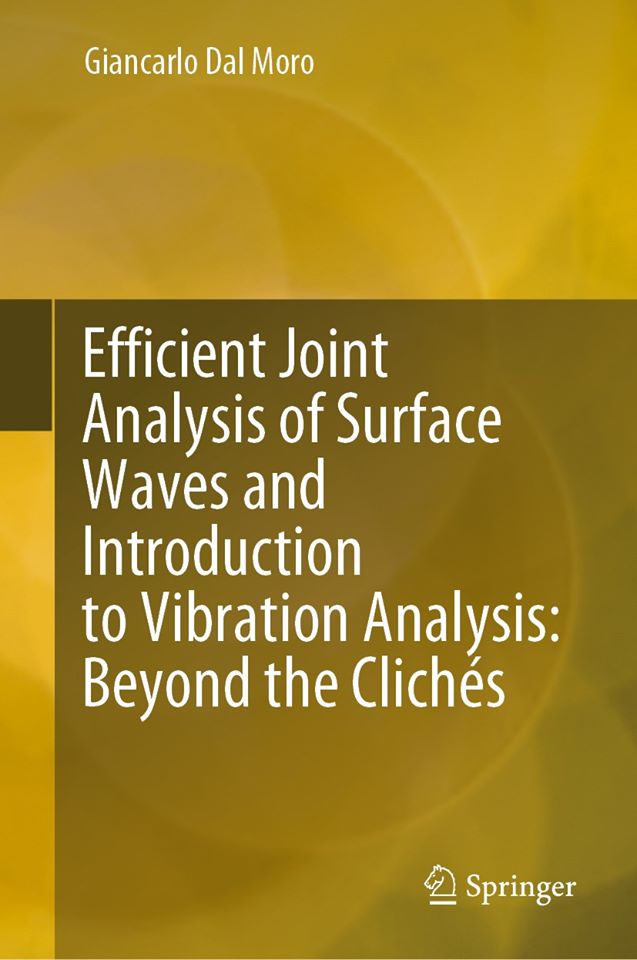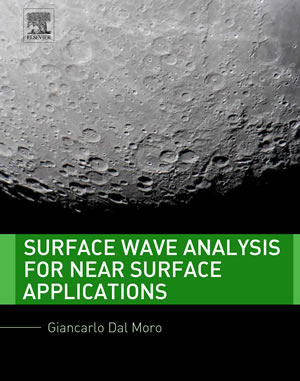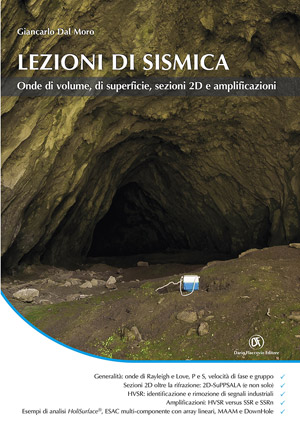winMASW®
winMASW®
Our high-profile software application for the joint analysis of seismic data designed in order to achieve highly-reliable Vs (shear-wave velocity) vertical profiles according to all the multi-channel active and passive methods.
In order to accomplish such a goal, different methodologies are implemented:
- MASW (Multichannel Analysis of Surface Waves) analysis considering both Rayleigh and Loves waves (joint analysis)
- MFA (Multiple Filter Analysis) techniques (i.e. phase and group velocities) considering both Rayleigh and Loves waves
- ESAC (Extended Spatial Auto-Correlation)
- ReMi (Refraction Microtremors) analysis
- HVSR (Horizontal-to-Vertical Spectral ratio) to estimate the resonance frequency
- Analysis of Rayleigh-wave attenuation for the estimation of Qs quality factors
- Modeling 1D of P and SH-wave refraction travel times (also considering Low-velocity Channels)
- Synthetic seismograms and Full Velocity Spectrum (FVS) inversion
- RPM Analysis (Rayleigh-wave Particle Motion) frequency-offset surface
- Site Response (Response Spectra) computation
- PS-MuCAA (Passive Seismic – Multi-Component Amplitude Analysis)
- 2D-SuPPSALA (2D Subsurface Profiling via Passive Surface wave data Analysis from Linear Array)
winMASW® advantages
- The key feature of winMASW® is represented by the possibility of jointly analyzing different active and passive data. This way we can overcome the problems related to non-uniqueness of the solution and all the possible ambiguities in the data interpretation. Please consider that the "best" techniques to adopt for a survey actually depend on the goals and on the complexity of the site. For this reason winMASW® offers a complete arsenal of tools capable of handling any kind of analysis and problem.
- winMASW® allows you to do much more than the so-called MASW. The joint analysis is the only approach that allows to identify reliable solutions (not subject to ambiguity). The authentic joint analysis is carried out using the same software. Having different software for e.g. MASW, ESAC, ReMi, HVSR etc., is the best way to work in a complicated and inefficient way without being able to see the relationships between all these methods that only a complete and integrated software like winMASW® can give you.
- winMASW® is a flexible software. If you choose a basic version (e.g. Lite or Standard), you can upgrade to a higher and more complete version at any time.
- by choosing winMASW® you can benefit from a relevant scientific technical support (see publications) based on over twenty years of research activity in the field of surface wave analysis.
The winMASW® suite
winMASW® is available in six different versions: Academy, Professional, 3C, Standard, Lite and winHVSR.
- winMASW® Academy is the most complete version, appreciated all over the world, which implements an arsenal of tools and highly-innovative and advanced solutions to jointly analyze surface wave propagation according to all the multi-channel active and passive methods. In other words, everything you might need for an endless series of applications.
- winMASW® 3C represents the "minimum" approach we recommend and it is a good solution to start in the "right way" with the surface waves analysis. It allows the joint analysis of Rayleigh and Love waves and their joint inversion together with the HVSR.
- winMASW® Professional, less complete than winMASW® Academy, allows MASW analyses considering both Rayleigh and Love waves (and their joint inversion), ReMi analyses, computation and modeling of the H/V spectral ratio (Nakamura’s method) to estimate the resonance frequency, Vs30 calculation, 1D modeling of refractions (also considering low-velocity layers), ESAC and FK analyses only for linear arrays, analysis of Rayleigh-wave attenuation to determine QS quality factors.
- winMASW® Standard, classical MASW and ReMi techniques (Rayleigh waves only) through the analysis of the modal dispersion curves. Please consider that ReMi is a very problematic/poor technique (as highlighted in the winMASW® manual and in the Elsevier book) because the linear array generates ambiguity in determined and determinable velocities. In order to get information about the deepest layers we recommend the joint analysis of surface waves - Rayleigh and Love waves - and the HVSR.
- winMASW® Lite, the entry-level version that allows only the analysis of Rayleigh waves via modal dispersion curves.
- winHVSR, computation and modeling of the HVSR (Horizontal-to-Vertical Spectral Ratio) to estimate the resonance frequency and the Vs30 value.
For more details, please have a look at: - the fact sheets of the various versions (see column at the top right)
- the winMASW® user manual [in English or Espanol]
- the guidelines for seismic acquisitions and winMASW® datasheet
- all the case studies available in the section "manual & case studies"[see top of this page].
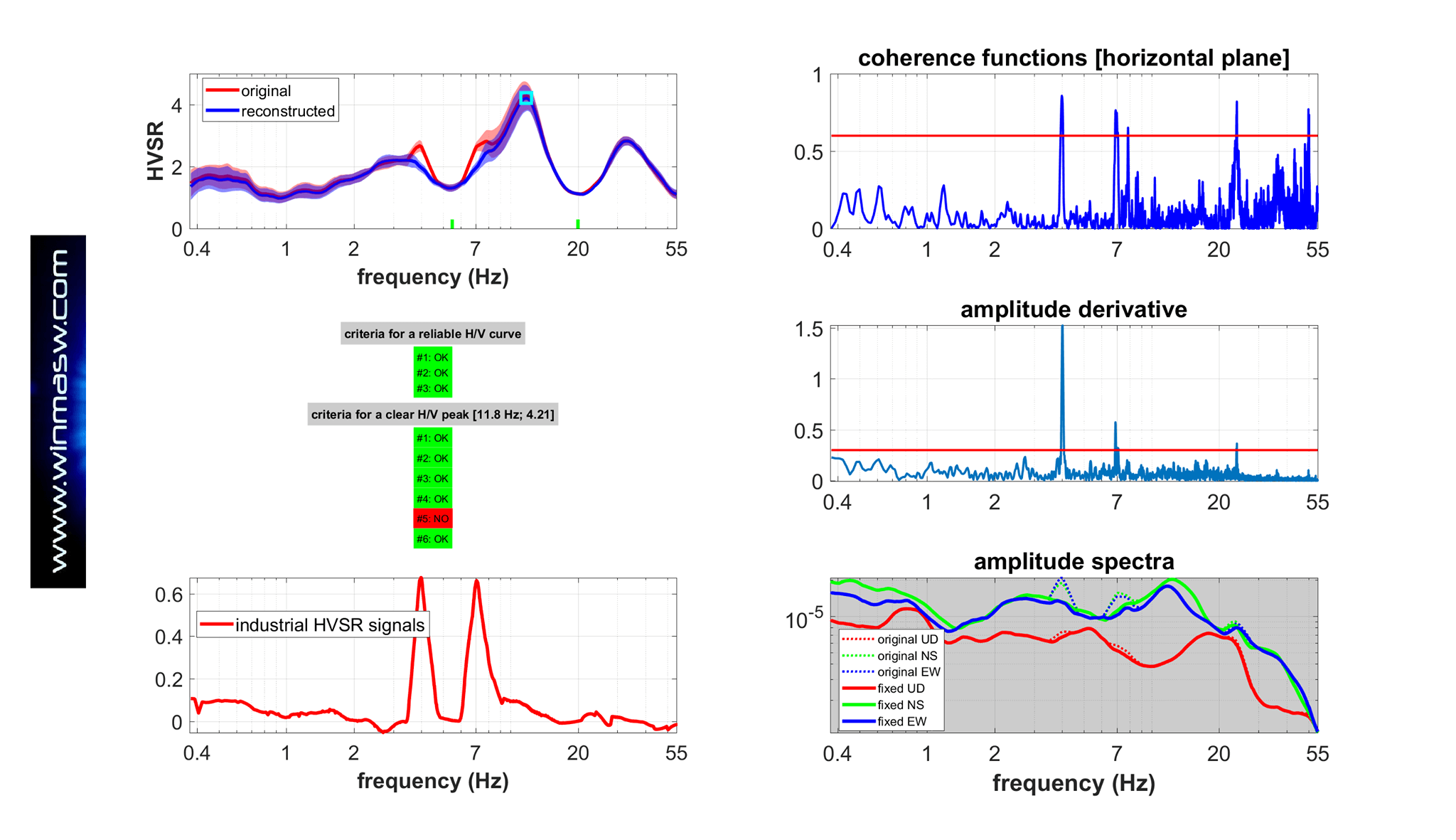
Software activation
winMASW® works by means of an hardware key (USB dongle) and can be installed on an illimitate number of computers (to use the software it is clearly necessary to insert the key). winMASW® works only on 64bit operating systems (for more details take a look at the user manual).
In order to get the best quote, in addition to mentioning the version(s) you are mostly interested in, it is always useful to specify your current equipment (i.e. seismograph, geophones etc) and/or the kind of surveys you intend to perform.
Please consider that, we do not provide only the software for the data analysis, but an optimized field equipment as well: seismograph, seismic cables, geophones and so on.
If you do not have any equipment, contact us and we will find the solution that best meets your needs.
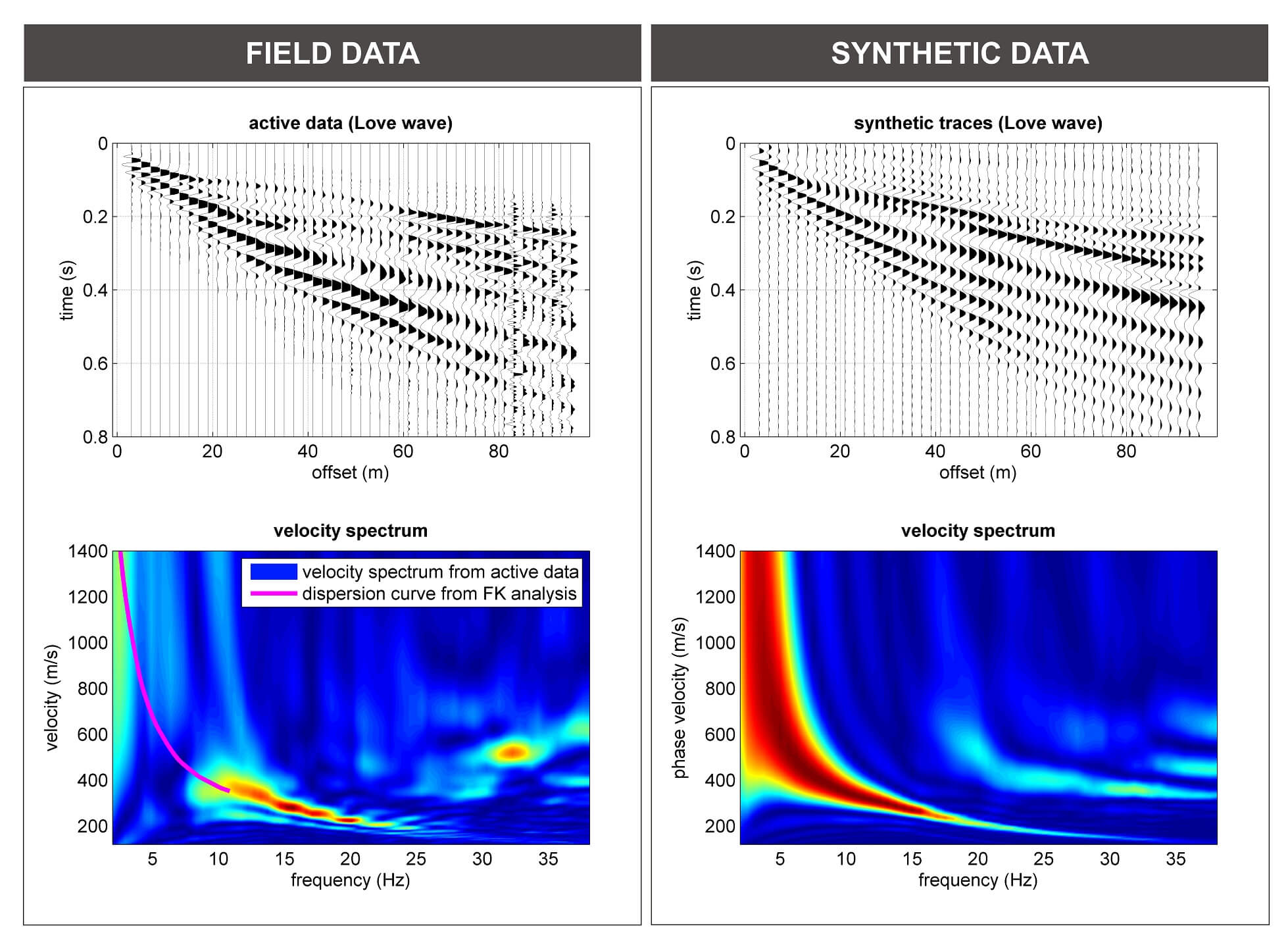
Love waves (THF): field data (on the left) and synthetic traces for FVS analysis
Manuale winMASW® [IT]
winMASW® manual [EN]
Manual de usuario winMASW® [ES]


